By: Jerry W. Kousen
Hobart High School
Hobart, Indiana


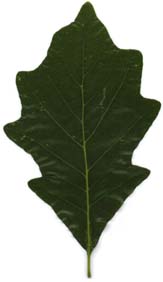
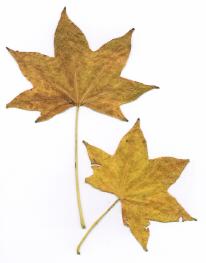

Introduction | Task | Process | Evaluation | Conclusion
By: Jerry W. Kousen
Hobart High School
Hobart, Indiana





Introduction | Task | Process | Evaluation | Conclusion
Welcome to the forests of Indiana. Look around and get comfortable. You will be here for a while. You are part of a team of four newly hired botanists for the Indiana Department of Natural Resources. People have a lot of questions about leaves and the trees they come from. Will you have the answers they seek? Will you be able to deal with their questions with knowledge and expertise?
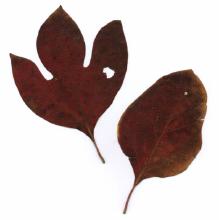

Introduction | Task | Process | Evaluation | Conclusion
Your job is to produce a set of fact cards. Visitors walking in the state forests of Indiana will be able to use these cards to identify the most common deciduous trees of Indiana by their leaves. The leaf characteristics fact cards must include drawings of important characterics in the identification of leaves. The tree identification fact cards must include the name of the tree, type, shape, arrangement and margins of the most common leaves in Indiana.


Introduction | Task | Process | Evaluation | Conclusion
The class will be divided into groups of 4. Get your group assignment from
your teacher.
Decide which of the following roles each member of your group will assume.
Specialists, you must now locate the required information for your leaf characteristics notecard as listed behind your role. The following sites should contain a lot of the information that is necessary for the completion of this task. You may also use leaf identification books to locate the information. On each card, the source of your facts must be listed.
MSU's Tree Identification Cards
Trees of Eastern North American Forests
Tree Identification Cards Index
When each specialist has completed their leaf characteristic card, one member of the group should see the teacher for a stack of 3X5 notecards and 2 lists of trees your group will be responsible for. Each group will have a total of 10 trees.
On the front of each tree identification card write the name of one of the trees from the two lists below that you are assigned. You have a total of 10 trees that belong to your group.
List A
- Ash
- Aspen
- Basswood
- Beech
- Birch
List B
- Buckeye
- Butternut
- Catalpa
- Cherry
- Chestnut
List C
- Dogwood
- Elder
- Slippery Elm
- Gum
- Hackberry
List D
- Hickory
- Linden
- Locust
- Magnolia
- Maple
List E
- Mulberry
- Red Oak
- Persimmon
- Redbud
- Sassafras
List F
- Serviceberry
- Sycamore
- Tuliptree
- Walnut
- Willow
List E
# Boxelder
# Ironwood
# Gum,Sweet
# Osage-Orange
# Cottonwood
List F
# PawPaw
# Coffee-Tree
# Shagbark Hickory
# Swamp Oak
# American Elm
Each Group
Will Have
2 Different
Lists to
Work From
On the back of each tree identification cardprint the following words:
Shape:Margin:Arrangement:Type:Sources:
As a group use the websites listed below to find a picture and description of the leaves of the trees you are assigned. Each expert should use their knowledge of leaf characteristics (shape, margin, arrangement and type) to fill in the information on the tree identification card.
Bonus points are available if you sketch or cut and paste a picture of the leaf on the front of each card.
| Example FRONT of 3 X 5 card | Example BACK of 3 X 5 card |
| Staghorn Sumac
(Bonus: picture of leaf) |
Shape:
Lance-shaped
Margin: Toothed Arrangement/position: Alternate Type: Odd-pinnately compound Sources: www.venturenorth.com |
Websites for Tree Identification Cards:
MSU's Tree Identification Cards
Trees Add Beauty to Our Landscape
ISU Forestry Tree Identification
Tree Finder: Leaf Identification Guide
Tree Identification Cards Index
How to Identify Some Common Indiana Woods
Indigenous Plants and Native American Uses in the Northeast

Introduction | Task | Process | Evaluation | Conclusion
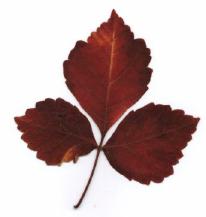
Leaf Characteristics Cards Scoring Rubric
| accuracy of facts | 1 | 2 | 3 | 4 | 5 |
| drawings | 1 | 2 | 3 | 4 | 5 |
| neatness | 1 | 2 | 3 | 4 | 5 |
| spelling | 1 | 2 | 3 | 4 | 5 |
| works cited | 1 | 2 | 3 | 4 | 5 |
Group Participation Scoring Rubric
| stayed on task | 1 | 2 | 3 | 4 | 5 |
| shared information | 1 | 2 | 3 | 4 | 5 |
| worked well with others | 1 | 2 | 3 | 4 | 5 |
Tree Identification Cards Scoring Rubric
| accuracy of facts | 1 | 2 | 3 | 4 | 5 |
| neatness | 1 | 2 | 3 | 4 | 5 |
| spelling | 1 | 2 | 3 | 4 | 5 |
| works cited | 1 | 2 | 3 | 4 | 5 |
Bonus Points for leaf sketch on front of cards _____


Introduction | Task | Process | Evaluation | Conclusion
Your team of botanists should know a wealth of information about Indiana's deciduous trees and their leaves. You should be able to help visitors as they ask you to identify leaves. Explain the leaf shapes, margins, arrangements and types using your leaf characteristics cards, then help people identify the trees with the tree identification cards. Teach visitors how to use your cards for their own leaf collections. Visit the forests often.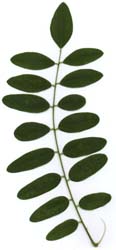

Introduction | Task | Process | Evaluation | Conclusion